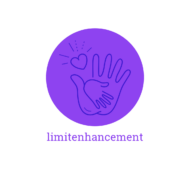Navigating the journey of toddlerhood can feel like a thrilling roller-coaster ride for many parents. It’s a time of rapid growth and change, marked by bursts of energy, curiosity, and the burgeoning independence of your little one. But what exactly is the ‘toddlerhood’ age range, and what can you expect during this dynamic phase?
From the first unsure steps to the constant “why’s”, toddlerhood is an exciting stage in a child’s life. It’s filled with significant developmental milestones that lay the foundation for future learning and growth. This article aims to shed light on the age range of toddlerhood and provide insights into the developmental stages you can anticipate.
So, strap in and prepare for an enlightening journey through the fascinating realm of toddlerhood. You’re about to delve into a world of growth, discovery, and the purest form of joy – witnessing your child’s development.
Toddlerhood Age Range
Toddlerhood, that energetic stage following infancy, generally starts around a child’s first birthday, stretching until around the age of three. It’s a time brimming with exploration and the blossoming independence of a child.
The Definition of Toddlerhood
 Toddlerhood denotes the life phase from one to three years of age— a period marked by significant growth and development in a child. During this stage, children start moving around freely, exploring their surroundings with increased curiosity. They begin to form distinct personalities, demonstrating a wide array of emotions and responses to their environments. In this stage, children also develop their language skills, gradually expanding their vocabulary from single words to complete sentences.
Toddlerhood denotes the life phase from one to three years of age— a period marked by significant growth and development in a child. During this stage, children start moving around freely, exploring their surroundings with increased curiosity. They begin to form distinct personalities, demonstrating a wide array of emotions and responses to their environments. In this stage, children also develop their language skills, gradually expanding their vocabulary from single words to complete sentences.
Physical Growth During Toddlerhood
Expanding on the earlier observations about the toddlerhood age range, during this period, children experience significant physical growth that influences their other developmental milestones. This period, marked by dynamic development, sees children turning into lively, agile beings, exploring their world with newfound physical abilities.
Motor Skills and Mobility
Rapid progress in motor skills characterizes toddlerhood. Toddlers start as unsteady walkers, but by the age of three, they achieve more control and balance, running, jumping, and even climbing stairs. Developing fine motor skills also become apparent, with activities like scribbling, stacking blocks, and buttoning clothing.
For instance, a two-year-old might demonstrate the ability to walk up stairs while holding a handrail, draw straight lines, and make circular doodles. By three, they may run easily, navigate stairs unassisted, and show control in holding a pencil. Understand that these are generalized milestones; not every child follows the same timeline.
Sleep Patterns and Needs
Sleep, an integral part of a toddler’s growth, evolves as they age. Initially, they may need up to 14 hours of sleep, including daytime naps. However, this requirement gradually reduces; by three, they might only need 10 to 12 hours of sleep, with regular naps becoming rare.
Consider a two-year-old who sleeps up to 12-14 hours a day, with one or two naps included. By the end of the toddlerhood stage, a three-year-old’s sleep schedule might reduce to only needing about 10-12 hours, primarily at night. Always remember, parents must monitor their child’s sleep patterns and consult with a pediatrician if any concerns arise.
Studying these two aspects – motor skills and sleep needs – parents can prepare for supporting their toddler’s physical growth during this foundational period.
Cognitive and Emotional Development
Moving into toddlerhood, developmental journey gravitates majorly towards cognitive and emotional maturation. This section deep-dives into these aspects, focusing on language acquisition and the development of social skills and independence.
Language Acquisition
 During toddlerhood, children undergo a stage of rapid language development. Starting with single-word utterances around the first birthday, toddlers typically combine two or more words in sentences by the age of two. By three, most toddlers can speak in complex sentences and have an impressive vocabulary of around 200 words. They can understand and follow simple instructions, making them more capable of engaging and participating in activities. This process doesn’t happen in isolation, it’s robustly influenced by the environment. Parents and caregivers, by talking, reading, and singing to a toddler, foster language acquisition.
During toddlerhood, children undergo a stage of rapid language development. Starting with single-word utterances around the first birthday, toddlers typically combine two or more words in sentences by the age of two. By three, most toddlers can speak in complex sentences and have an impressive vocabulary of around 200 words. They can understand and follow simple instructions, making them more capable of engaging and participating in activities. This process doesn’t happen in isolation, it’s robustly influenced by the environment. Parents and caregivers, by talking, reading, and singing to a toddler, foster language acquisition.
Social Skills and Independence
Along with language, toddlerhood is marked by growing social skills and a burgeoning sense of autonomy. Toddlers start to play alongside (parallel play), and occasionally with, other children. They communicate their desires and exhibit a wide range of emotions from joy to frustration and anger. A key milestone, however, is the emergence of self-awareness and independence. From insisting on dressing themselves, eating alone to attempting tasks independently, it’s a transition from complete aid to autonomy. This progress doesn’t eliminate the need for adult supervision, but it certainly signifies an increased ability to manage some tasks independently. An encouraging environment, nurturing these instincts, promises to be instrumental in molding a toddler into a confident, independent individual.

